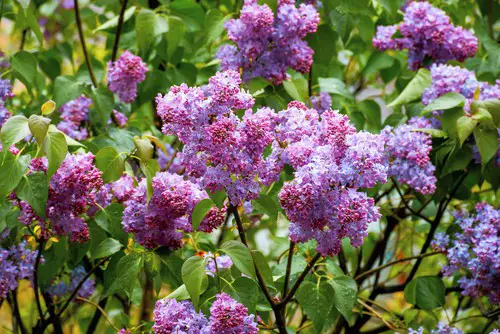If you’ve been getting nervous about your lilac bush leaves curling turning brown and aren’t quite sure of what to do about it you’ve come to the right place.
Leaf curl and browning in lilac bushes can be caused by a variety of factors, including powdery mildew, bacterial blight, aphid infestations, and environmental stressors, such as drought or extreme heat, making it important to identify the underlying cause in order to implement effective treatment.
Below we share (almost) everything you need to know about caring for your lilac bush, helping it grow as healthily as possible, and quickly diagnosing why its leaves may be curling and turning brown so that you can restore and rejuvenate it before the plant dies off.
Let’s dig right in!
My Lilac Bush Leaves Are Curling and Turning Brown – What’s Happening?
Straight out of the gate you should know that there are a number of different root causes that can be linked to your lilac bush leaves curling and turning brown.
Some of these issues are easier to diagnose than others. Some of them are easier to treat than others. But you’re going to need to know about all of them if you’re going to heal your plant going forward.
1. Experienced a Cold Snap?
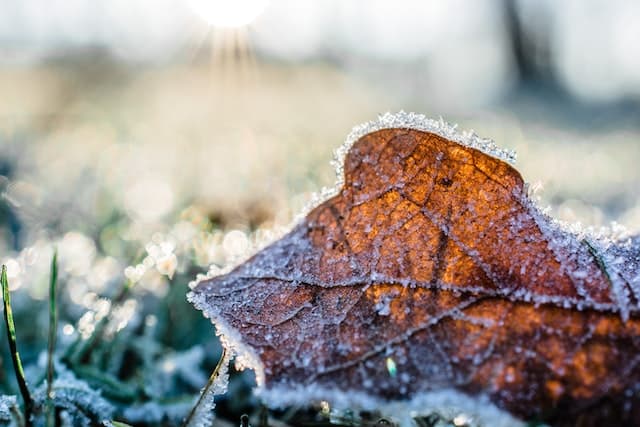
One of the most common reasons your bush has started to brown or curl in the leaves has to do with exposure to cold temperatures.
While the lilac is a pretty resilient plant it hates cold weather. Frost or prolonged exposure to sub 60° temperatures will inevitably cause your lilac leaves to curl and twist – and it’s definitely going to cause them to brown.
2. How About a Ton of Sun?
At the same time, too much exposure to direct sunlight is also going to new a number on your favorite bush.
Excessive direct sunlight exposure will actually “scorch” the plant, heating it up and destroying the living cells in the leaves. This can kill off a beautiful bush faster than you think.
3. What About Drought Conditions?
Obviously, anytime your lilac bush isn’t getting enough water it’s going to show signs of struggling. Lilac bush leaves curling turning brown is a textbook symptom of your plants just not getting the water that they need to thrive.
4. Pest Infestation
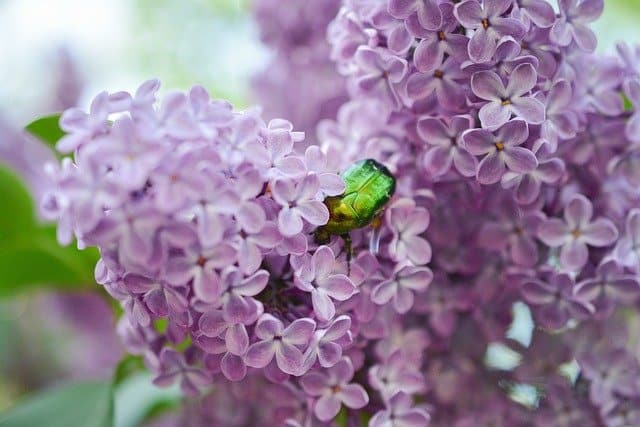
Aphids, lilac borers and scale insects can also be the reason your lilac bush leaves are curling and browning. These insects suck leaves sap, resulting in leaf discoloration, wilting and curling. Constantly monitoring your plant for signs of pest infestation is important for its healthy growth.
5. Diseases
Fungi and bacterial diseases can also cause the lilac bush leaves to curl and turn brown. Powdery mildew, bacterial blight and leaf spot are some of most common diseases that cause these problems. Most of the time, overwatering the lilac bush plant creates the right environment for fungi to thrive. Hence, watering the plant moderately can help prevent both fungi and bacteria from attacking its leaves.
6. Chemical Contamination
Pesticides, herbicides and other chemicals can cause curling and leaf discoloration in the lilac bush plants. Due to their nature, these plants are selective with some chemicals such as herbicides. Perhaps you applied some chemicals to a nearby plant, and it splashes on the lilac bush plant. Its leaves may begin to change color and become curly within a short time.
7. Nutrient Deficiency
If the lilac bush plant lacks essential nutrients such as nitrogen, potassium and iron, its leaves will suffer. Sometimes, this issue can happen as a result of not applying enough fertilizers to the plant. Besides, the soil may have a poor quality or PH imbalances. Finding out the major cause of the leaf curling and browning will help you figure out the right solution.
On top of all of that, your lilac bush might just be getting old and tired. It may have pulled a ton of core nutrients from the soil over time without those nutrients being replaced.
If you’ve begun to notice your lilac bush browning or curling try to diagnose the root cause issue as quickly as possible. That’ll give you a little extra time to reverse course and hopefully heal your plant back to just as good as the new condition.
Learn more from related posts:
Can a Browning Lilac Be Saved?
In the overwhelming majority of situations you’ll absolutely be able to save a lilac bush that has started to brown and has started to curl.
Here’s how!
1. Diagnose the Root Cause
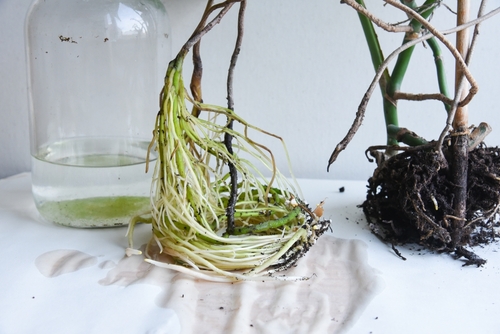
First (as we highlighted a moment ago) you need to quickly diagnose the root cause issue that is making the lilac bush leaves curl and turn brown.
Inspect the tree, looking for obvious signs of damage like from insects, bacteria, or fungus.
Inspect the soil, making sure that it has good structure, isn’t too dry or too wet, and treader are the last time that you fertilized or fed your lilac bush.
How has the weather been lately?
Has it been very cold, maybe even with a bit of frost on the ground? Has it been extremely hot with almost drought -like conditions? Both of those things can cause a lot of lilac bush leaves curling and turning brown action.
At the end of the day, though, you won’t be able to fix and heal your lilac until you know exactly what is causing the issue. Study your plant to find the problem!
2. Wash Your Lilac
One of the easiest ways to breathe new life into a lilac bush that is struggling is to simply gently wash the plant from top to bottom.
The idea here is to wash off any of the chemical contaminants, fungal growths, or bacteria that are destroying the lilac from the outside in. You can use a regular old garden hose with a gentle spray setting to get the job done.
The added benefit here, of course, is that you’ll also be injecting a bit of freshwater into the plant as well. That’s always a good thing!
3. Prune Strategically
Strategic pruning of your lilac bush can also boost its health as well.
This is especially true of lilac bushes that have gotten very big, almost too big for the nutrients in the soil to support themselves. Too many lilac bushes will also attract a lot of extra sun, running the risk of “cooking” your lilac bush and turning leaves brown.
You can also strategically prune sickly or damaged branches and leaves on your bush. That’ll stop your plant from sending critical resources to these already compromised areas.
4. Treat with a “Plant Medicine”
Believe it or not, there is a ton of commercial “plant medicine” available on the market today that can help you rejuvenate your plants faster than you would have thought possible – including a number of formulas specifically designed to give lilac bushes a boost!
Do your research and due diligence before buying (certainly before using) any commercial plant medicine, though.
You want to be sure that it’s going to help without any risk of adverse side effects or potentially killing off your plant.
5. Stick to a Strict Watering Schedule
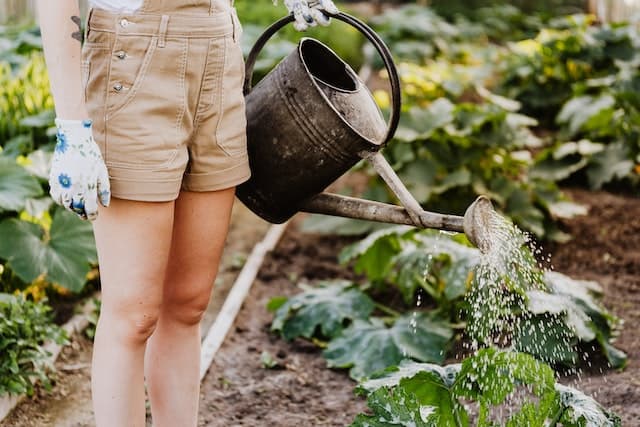
Sticking to a strict watering schedule is always a good idea, no matter the kind of plant you’re looking to support.
Part of a strict watering schedule, though, is making sure that the soil your lilac bushes planted in can hold and utilize the water that you are giving it.
Mulch helps in a big way. So does adding a little extra decomposing organic material (some compost) every now and again.
Feed and fuel your plant and you’ll be all lot happier!
How to Grow Healthier Lilacs
When you get right down to it, though, it’s much better to get out in front of lilac bush leaves curling turning brown issues and preventing them completely than trying to diagnose the issue and then resolve it after the fact.
Here are a couple of tips to help you grow happier and healthier lilac bushes.
Start with smarter planting locations – Make sure that your lilacs are going to get just the right amount of sun and just the right amount of shade. They like about six hours of direct sunlight (and not much more than that).
Lilacs like well-drained soil – Soil that is rich in organic matter and has halfway decent drainage is going to allow lilac bushes to really thrive. Avoid soggy, waterlogged soil that can cause root rot.
Fertilize every year – Lilacs like to have a little bit of fertilizer, but not too much, which is why you should be fertilizing once a year in the spring.
Mulch every year – Mulching your lilacs not only helps you to better retain moisture that might have otherwise evaporated away, but it does a good job of controlling weeds as well. Mulch after you fertilize.
Protect your bush from extreme weather – Do everything you can to protect and buffer your lilac bushes from extreme temperature swings. Consider covering them with frost blankets when the temperature starts to dip and give them extra water (and extra shade) when the temperature climbs higher.
Prune strategically – Strategic pruning allows you to remove dead and dying leaves, the kinds of leaves that are most likely to attract disease, fungal infections, and insects.
Closing Thoughts
Lilacs are some of the most beautiful bushes you can have on your property and really don’t require a whole lot of “babysitting” to keep happy and healthy.
At the same time, there are a number of things that can cause lilac bush leaves to curl and turn brown – and most of them are pretty serious issues you want to address ASAP.
Use the inside information we highlighted above to get out in front of these issues and you won’t have anything to worry about, though.
Frequently Asked Questions
Are lilac bush leaves curling turning brown a death sentence for my plant?
Absolutely not! While these symptoms are certainly signs of plant damage most of the time the issues can be reversed and your plant restored with quick interventions.
Will brown and curled leaves turn green and unfurl again?
It’s very unlikely. Lilac bush leaves that have browned and started to curl are almost always leaves that are completely dead. They’ll drop off in a couple of days (maybe sooner in a stiff wind) and new ones will grow in their place.
Do lilac bushes die of old age?
Believe it or not, lilac bushes do have an average “lifespan” of between 25 years and 50 years or more. A lot of that depends on how the plants are cared for. Really well cared for lilac bushes may live forever!

Hey, I’m Lisa and I’ve been an avid gardener for over 30 years. I love writing, talking and living in the garden! Feel free to connect with me on my socials below

